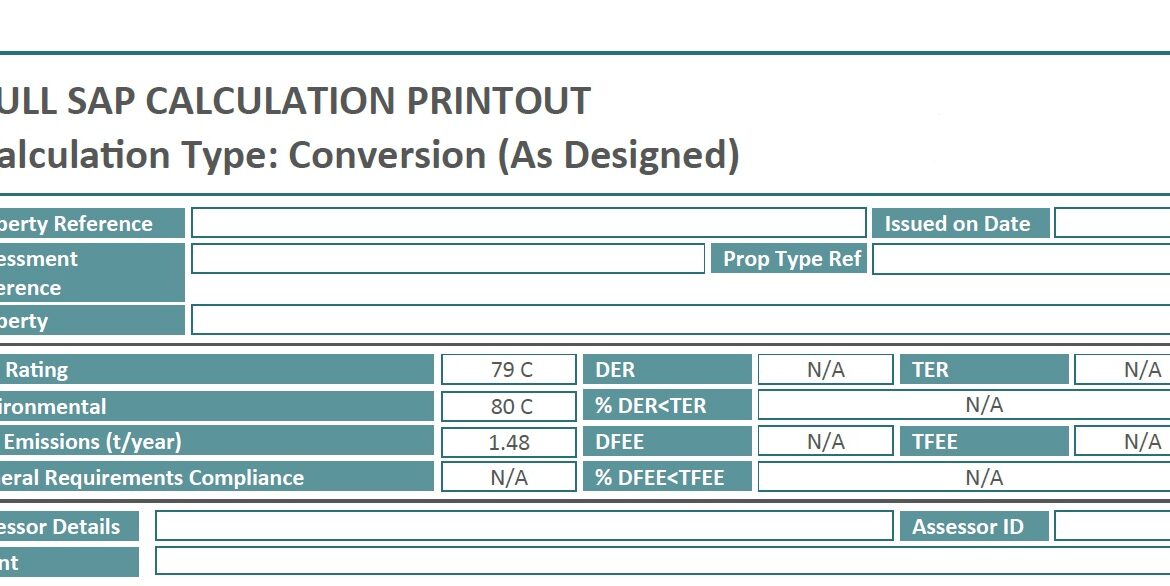With a few exceptions, all domestic and commercial buildings available on the market to buy or rent are legally required to have an Energy Performance Certificate (EPC). In order to produce an EPC, it is necessary to carry out SAP calculations. The SAP stands for ‘Standard Assessment Procedure’. It is a detailed methodology used to measure and compare the energy and environmental performance of dwellings. To simplify, you need both to prove that your house meets minimum energy efficiency standards set out in Building Regulations. It is either the owner or landlord responsibility to obtain these documents. An EPC is valid for 10 years. Once it has expired, you need to book a property assessment to get a new one. Similarly, if you are planning to alter your property in a significant way, for example adding an extension with a glazed area of more than 25% of the total new floor, bear in mind you will have to receive a new, updated certificate. For new builds, Building Regulations require that a SAP calculation and a Predicted EPC are submitted before the commencement of work. EPC gives the property an energy efficiency rating between A (top score) and G. It informs about your property’s energy use and average running costs, along with recommendations on how to save energy and money. Energy certificates are available for public viewing free of charge by using the online EPC register. You can look them up by providing either the property’s address or the EPC’s report reference number. For those who do not want to share their rating, there is an option to opt out of the register at any time.
Buildings that do not need an EPC include:
- places of worship
- temporary buildings that will be used for less than 2 years
- stand-alone buildings with total useful floor space of less than 50 square metres
- industrial sites, workshops and non-residential agricultural buildings that do not use a lot of energy
- some buildings that are due to be demolished
- holiday accommodation that’s rented out for less than 4 months a year or is let under a licence to occupy
- listed buildings
- residential buildings intended to be used less than 4 months a year
SAP assessment is a critical measure of a home’s energy efficiency. Carrying out SAP calculations is basically a desk job, and therefore you will need to provide various detailed information, for example:
- Complete drawing package incl. structural drawings and project specification
- Details of lightning, ventilation, heating and hot water systems
- Details of windows and doors (incl. U-values)
- Information on used renewable energy technologies
The calculations have the form of a worksheet supported by tables. The SAP rating is worked out by assessing energy consumed by a dwelling delivering everyday comfort and service. The calculations use the standard occupancy and behaviour to ensure the procedure is universal. The two headline figures which SAP calculations measure are:
- the Dwelling Emission Rate (DER) — the emission of CO2 likely to be produced
- the Dwelling Fabric Energy Efficiency (DFEE) — the energy demand to maintain a comfortable internal temperature
The performance of your dwelling is then set against the standard criteria determined by the Target Emission Rate (TER) and Target Fabric Energy Efficiency (TFEE). Understandably, these standard rates cannot be lower than the performance of your dwelling.
